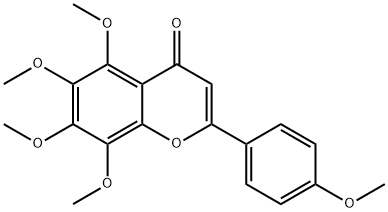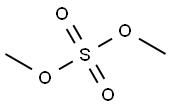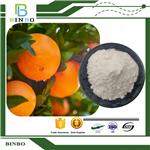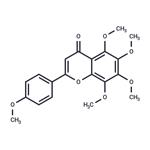Chemical Properties
Tangeretin is a yellow crystal that is volatile, difficult to dissolve in water, and easily soluble in organic solvents such as ethanol and ether. It is the active ingredient in tangerine peel. It has a good effect in treating animal mites.
Uses
Tangeretin has been used as an antioxidant and antifungal agent to test its effects on ferroptosis inhibition, conidial development, and appressorium formation against Magnaporthe oryzae. It has also been used as a co-chemotherapeutics agent to study its cytotoxic effects in combination with 5-Fluorouracil (5-Fu) on WiDr colon cancer cells.
Definition
ChEBI: Tangeretin is a pentamethoxyflavone flavone with methoxy groups at positions 4', 5, 6 , 7 and 8. It has a role as an antineoplastic agent and a plant metabolite.
General Description
Tangeretin is a polymethoxyflavone extracted primarily from the peels of citrus fruits like Citrus sinensis and Citrus reticulata.
Biological Activity
Tangeretin is a flavonoid found in the peel of citrus fruits where it most likely provides natural resistance to fungi. Tangeretin has been shown to counteract tumor promoter-induced inhibition of intercellular communication and to inhibit cell proliferation in several cancer lines.






